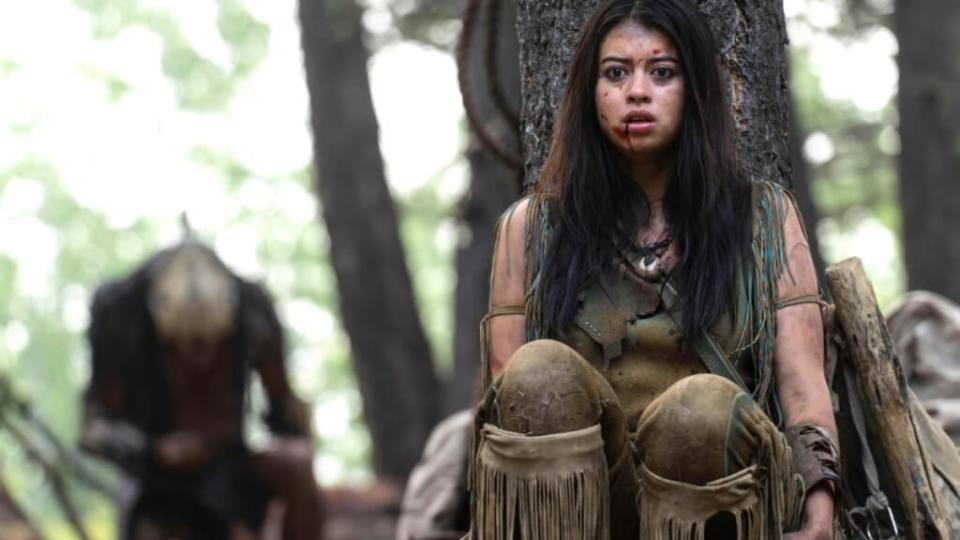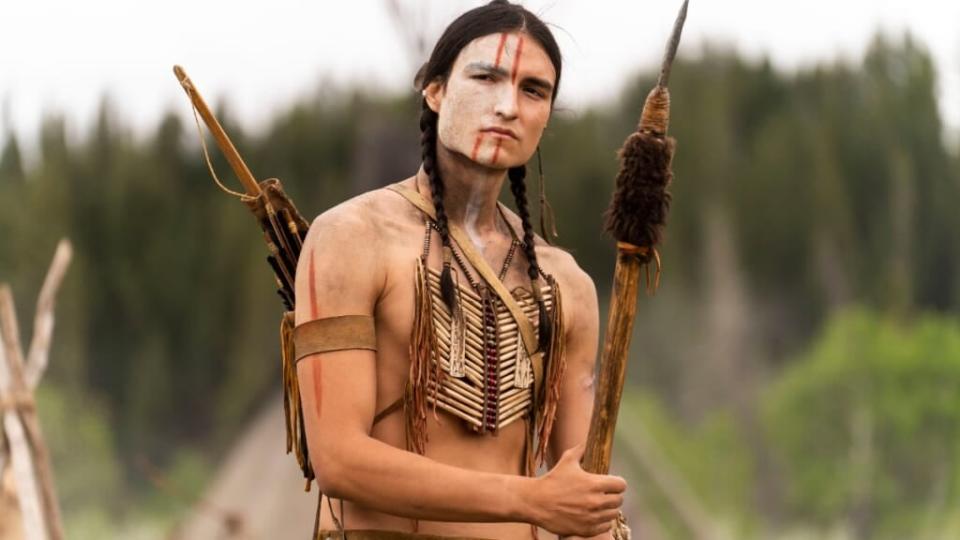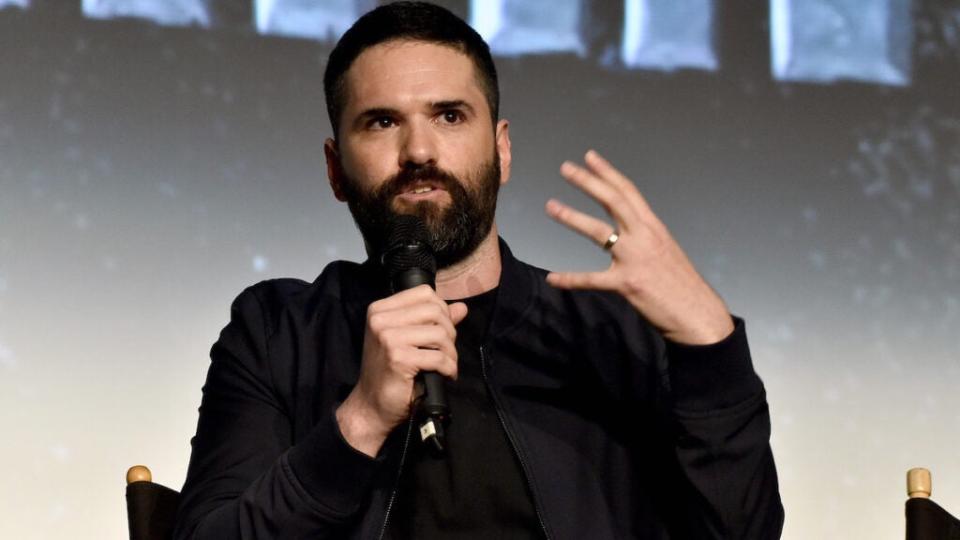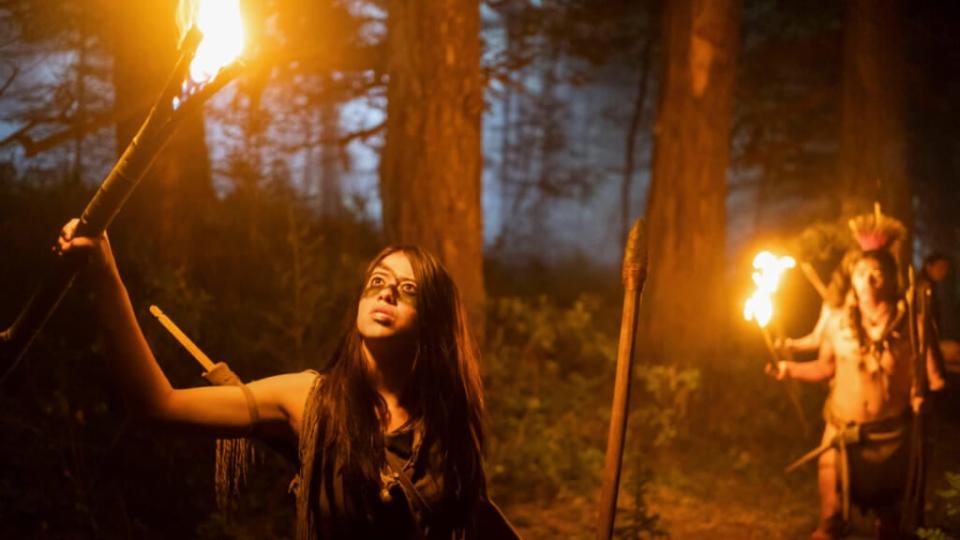‘Prey’ Director Dan Trachtenberg Says Casting Amber Midthunder as Comanche Hero ‘Was a Blessing’
- Oops!Something went wrong.Please try again later.
- Oops!Something went wrong.Please try again later.
- Oops!Something went wrong.Please try again later.
It’s impossible to describe the 2022 Hulu release of “Prey” as anything other than a massive success on every level. As a prequel breathing new life into the long-running “Predator” franchise, the film excels. As an underdog tale of a young Comanche healer determined to prove herself as a hunter, the movie thrives. As a love letter to a too-often sidelined indigenous community, the feature hums. And as a tense and brutal action installment, “Prey” absolutely rips.
For its efforts, “Prey” and the people involved with its creation nabbed six Emmy nominations, including mentions for picture editing, music composition, sound editing, writing and directing of a limited or anthology series or movie, as well as a nomination for Outstanding Television Movie.
Dan Trachtenberg, who scored nominations for both directing and writing, spoke with TheWrap recently about how the film started taking shape decades ago in his mind, the process of getting the finished product to the screen and how the film’s Comanche language dub came to be.
Where did the concept for “Prey” begin?
I was thinking about making a period sci-fi film, something that we don’t really get too often, and also wanting to make a story that was primarily told through reaction, with as little dialogue as possible, if any. But then, not wanting it just to be a visceral experience, but really wanting it to be an emotional one, as well.
So we [with screenwriter Patrick Aison] thought, well, maybe if we take the engine of a sports movie, an underdog story, and infuse it with a genre setting, then it was like, what’s a protagonist that we never see? And that lead to Native Americans and, more specifically, Comanche, who have so often been relegated to playing the sidekick or the villain and never the hero.
Thinking about “Who’s the antagonist,” that’s where it was like, “Oh my gosh, the Predator, thematically, is always looking for the alpha.” If our main character is trying to prove themselves and saying, “I am worthy,” and everyone around her saying, “We don’t think you’re worthy,” then the conflict is there before the sci-fi even shows up. And then the Predator comes.

Were you into the original “Predator” when it came out?
I was not allowed to see “Predator” when it first came out because it was R-rated. I was in third grade, I think, and I was in the back of a carpool on the way to a karate tournament and all the sixth graders had seen “Predator” and described the entire movie to me on the way to the tournament. I distinctly remember them saying, “There’s an awesome scene where Billy, the Native American tracker, stops on a bridge over a waterfall and cuts himself and fights the Predator.”
That scene is not in the movie. You see Billy cut himself and then he screams off-camera and that’s it, but my kid brain envisioned how it must have been. So that was the first seed planted of what eventually became “Prey.”
So much of this story is rooted in the Comanche community. How did you go about making sure that you got that representation right?
Aside from doing our own research, right from the jump, a woman named Juanita Pahdopony, who unfortunately passed away before we went into production of the movie, was with us as we were writing the first draft of the script. Her nephew, Dustin Tahmahkera, was also helping us. They gave us several books to read.
A lot of the documentation, there’s the tiniest chapter that’s pre-1800s and then you get into more written records, but our movie is set prior to that and a lot of that information is not written from the Comanche perspective. So I realized very early on that there’s no amount of research that’s going to form this and it was essential to have their hope and their instincts early on.
Then getting our producer Jhane Myers, who is Comanche herself, really take us through the entire process, the forging of the movie and finishing the film, the whole way. Having those instincts, not only because there’s not a lot of written record, but with her own historical research that she’s done and all of her close relationships as a culture bearer of the tribe and with other members. Even just her inherent feelings about genre moments so that can all feel like the fabric of the film.

Can you talk a little bit about the decision to do the Comanche dub for the film?
Initially the script was written to be entirely spoken in Comanche and then it was decided that we couldn’t do the whole movie that way. Then it was pitched that maybe it could start out Comanche and then transition into English, but that proved very challenging because of the naturalism of the movie. I found it hard to do a “Hunt for Red October”-style gimmick where we shift midway through, because the movie has a very specific way of dealing with language when the fur trappers entered the picture. It all got very confusing.
We decided maybe we just root the audience with them [the Comanche] and have them speaking the common language and then the foreigners [the French-speaking fur trappers] are the ones that are confusing to us all.
But the sad thing was no longer being able to provide the immersion and respect for the language and, almost, a cultural preservation document of a language that has to be kept alive or it won’t be remembered.
There have been other Native American language dubs before, like, I believe there was a Navajo dub of “Star Wars” but it had never happened before that a movie, upon release, you can have it in that language. So Jhane and some other folks tackled dubbing the entire movie, bringing back the original cast to do it themselves. It’s kind of remarkable what they were able to accomplish.
How was it having Amber Midthunder in that central role as Naru?
Amber was tremendous. She was tremendous when we first found her and that carried through the final film. When we auditioned her, she did the scene three ways: in English, in Comanche and then non-verbally. So much of the film is nonverbal and it was incredibly moving to see her perform a dialogue scene with no words. There was a whole physical portion of a screen test that we did with her and her fully embracing storytelling through physical movement, involving character instincts, that was exactly what we needed in a movie like this. It was a blessing that we were able to link up with her.

In other interviews you’ve mentioned your mixed emotions about continuous takes (also known as “one-shots” or “oners”).
We’ve had long takes throughout cinema history and they suddenly became in-fashion or trendy, probably because of the commentary on them, so that instinctually makes me want to think otherwise. At the same time, the oners I’m most attracted to are like what Steven Spielberg movies use, that had long gone unnoticed because they’re very invisible. It’s not like “Look, this entire scene is a oner,” it’s more like, “The scene holds. This is the best shot for this moment. So let’s do it.”
There’s a few of those in the movie, but one in particular that we wrestled with was the fight between Amber and the fur trappers. I’m such a fan of action film and filmmaking and was raised on Hong Kong action cinema and have been dying to one day be able to apply all the things that have been stewing inside of me for so long. This movie didn’t require all of that, but this one scene in particular, where there’s more of a melee battle, felt like I could finally do what I think is the right way to articulate action, which is clarity. Clarity of geography and understanding your heroes intentions throughout a scene, which a oner can sometimes do, but sometimes betray. So I really had to go into the choreography.
We had constructed more traditional coverage. The hook of the sequence is that she has no weapons and is trying to get to her own weapon and these guys are attacking her, so she’s constantly using their weapons against them. It’s all very reactive. She grabs a knife out of someone and sticks it back into them and then grabs that same one, you want to feel like she’s creatively figuring out how to get out of this jam physically.
Then we were behind schedule and the studio was like, you know, at the pace you’re going, it’s gonna take three days to shoot this sequence and you really only have a day to do it. I had already been thinking there is certainly a logic to a scene like this being one-shot. You want to feel like it’s all one breath, so that did make sense. I just didn’t want it to feel showboat-y. But we found a way to cover it which feels quite grounded and not slick. Like you’re barely missing it, but barely getting it, so that it feels more improvised and improvisational, with the cameras moving the way that she’s moving through the scene. So we ended up spending a day doing a little over 20 takes as opposed to three days getting all the various coverages one would need for all the stunts.

I would be remiss if I didn’t ask about everyone’s favorite scene-stealer, Naru’s dog Sarii.
Part of the inspiration for the character, when we first thought the movie might have no dialogue at all was like, she needs a Wilson [the volleyball in “Castaway”]. And I’ve always loved the imagery from “Road Warrior,” with Mad Max and his dog, the silhouette of that, and felt like, “Oh, how cool to see her and her little buddy.” It would bring a warmth to the film and I loved there being as much heart as possible, so that was the inspiration for having that character.
But trying to be a stickler for authenticity, there’s only so many breeds of dogs that could exist that would be appropriate for that time period. That led us to this very specific breed of dog, which meant that we had to find this dog and train it, as opposed to it being an already trained dog in the stable of our awesome animal trainers. So they found this dog about two months before shooting and very quickly trained her, Coco. On the one hand, she was a hot mess. On the other hand, she was adorable. There was a lot of not doing what the scene needed, as one would imagine, but then there was the moments that are included in the movie, every frame of them, where she did pull it off. It’s kind of remarkable and our trainers deserve all the credit for making it happen. She was a challenging actor to work with but we made it happen and we love Coco.
The post ‘Prey’ Director Dan Trachtenberg Says Casting Amber Midthunder as Comanche Hero ‘Was a Blessing’ appeared first on TheWrap.

